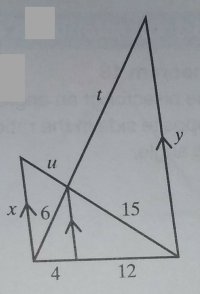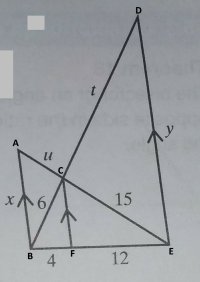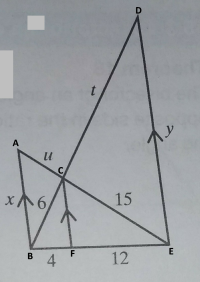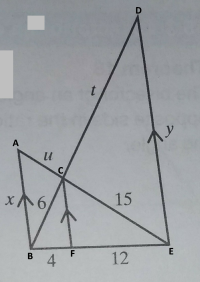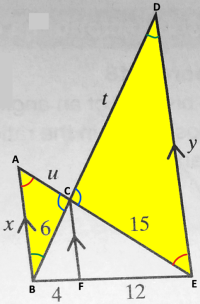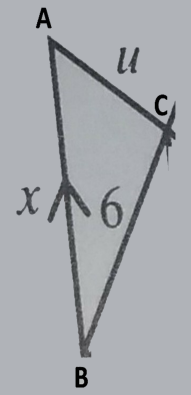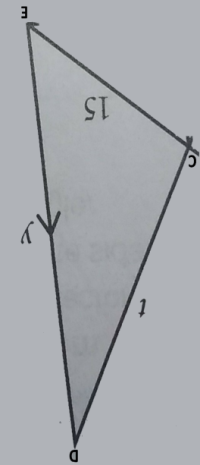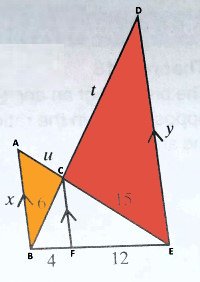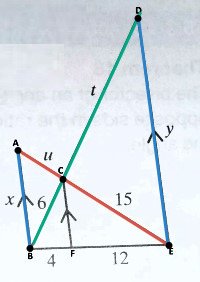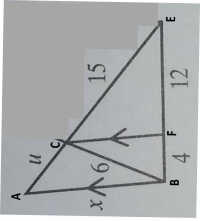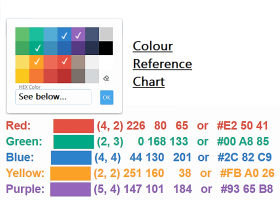Actually,
@chijioke's method for getting t and u is perfectly good; he is not using similar triangles directly, but rather a theorem (perhaps taught more in his country than in yours or mine) called the
Basic Proportionality Theorem or the Side-Splitter Theorem, that parallel lines split the sides of a triangle equally. In this case, using triangle DEB, it says that |BF|/|FE| = |BC|/|CD|, just as he said. In fact, this problem seems designed to use that theorem, based on which segments are given.
Yes, just, like you noted, what I used to obtain the value of t = 18 and u = 5 was the theorem of proportional division of the sides of a triangle which states that a line drawn parallel to one side of a triangle divides the other two sides in the same ratio.
But I was not able to use the same theorem to obtain the value of x and y to enable me get the ratio x:y.
Coming to the matter of applying the concept of ∼ Δs, I must thank
you The Highlander and Dr.Peterson for widening my horizon on the idea behind ∼ Δs as to what ∼ triangles are and what they are not.
Looking at the smaller Δ, Δ EAB which consists of two ∼ Δs ECF and EAB - guess I'm calling it well now. The ratio of the corresponding sides is [math]\frac{\text{|EC}|}{\text{|EB|}}=\frac{\text{|EF|}}{\text{|EB|}}=\frac{15}{15+u}=\frac{12}{12+4}[/math][math]\rightarrow 12(15+u)=15\times 16 \\
u = 20-15=5[/math]From the bigger Δ, Δ BED, there are two ∼
Δs BFC and BED.
The ratio of the corresponding sides is
[math]\frac{\text{|BF|}}{\text{|BE|}}=\frac{\text{|BC|}}{\text{|BD|}}=\frac{4}{16}=\frac{6}{6+t}[/math][math]\rightarrow 4(6+t)=16\times 6 \\
t = 24-6=18[/math]Now t= 18, and u =5, the same I got when I applied the theorem of proportional division of the sides of a Δ. The issue now is how to find the value of x and y just I stated earlier.
It is ABC and EDC that are similar.
I am still lost here. I still finding it difficult understanding how ΔABC and EDC are ∼
Δs. I was thinking that there are only two pairs of ∼
Δs which are (a) ΔECF and ΔEAB, (b)ΔBFC and ΔBED. The only way I can be convinced that ΔABC and ΔEDC is only by looking at the ratio
[math]\frac{\text{|BC|}}{\text{|CD|}}=\frac{\cancel{6}^1}{\cancel{18}_3}=\frac{6}{t}=\frac{\text{|AC|}}{\text{|CE|}}
\\=\frac{u}{15}=\frac{\cancel{5}^1}{\cancel{15}_3}=\frac{x}{t}
\\
\rightarrow x:y =1:3[/math] Waoh! it worked.
How can I look at these two
Δs
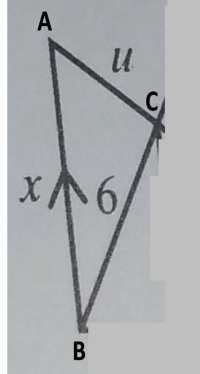
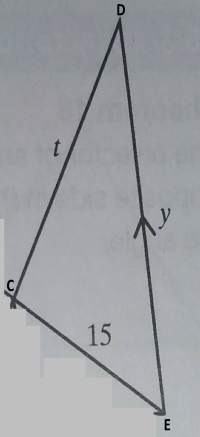
and call them
∼ . Perhaps because they are flipped. If so this kind of pairs
∼ Δs are not easy to recognize by me. Please could you please paste some link where I can handle exercises with this type of pairs
∼ Δs?
@Dr.Peterson, you suggested that I should use the concept of ∼ Δs
Okay let me give it a try. Looking at the smaller Δ EAB, the ratio of the corresponding sides of the ∼ Δs it consists of is
[math]\frac{\text{|EC|}}{\text{|EA|}}=\frac{\text{|EA|}}{\text{|EB|}}=\frac{15}{(15+u)}=\frac{12}{16}
\\ =\frac{\cancel{15}^3}{\cancel{20}_4}=\frac{\cancel{12}^3}{\cancel{16}_4}
\\
\rightarrow 3:4[/math]Because I want to get the value of x, I extend
[math]\frac{15}{20}=\frac{12}{16}=\frac{\text{|CF|}}{\text{|AB|}}
\\
=\frac{3}{4}=\frac{\text{|CF|}}{|x|} \rightarrow 3:4[/math]Problem! What is the value of |CF| and |X|? Would I be right to say that |CF|=3 and |x|=4?
Coming to the bigger
Δ, ΔBED which consists of two similar Δs, ΔBFC and ΔBED, the ratio of the corresponding sides is
[math]\frac{\text{|BF|}}{\text{|BE|}}=\frac{\text{BC}}{\text{|BD|}}=
\\
\frac{4}{16}=\frac{6}{t+6}=\frac{4}{16}=\frac{6}{24}
\\
=\frac{\cancel{4}^1}{\cancel{16}_4}=\frac{\cancel{6}^1}{\cancel{24}_4} \rightarrow 1:4[/math]I am interested in obtaining the value of y, I extend again
[math]\frac{4}{16}=\frac{6}{24}=\frac{\text{|FC|}}{\text{|ED|}}=\frac{\text{|FC|}}{\text{|y|}}
\rightarrow 1:4[/math]Problem again! What could be the value of |FC| and |y| respectively. Could be I right to say that |FC| =1 and |y| =4?
Oh lest I forget, ratio x:y is demanded not necessarily the values of x and y.
May be the ratio is 1:3. I am correct now to say that x:y =1:3?
Suppose I am correct, I would like to ask here, apart from applying the idea of |
∼ Δs, what other thing, idea or theorem could I have applied to get the ratio of x:y?
Thanks for helping in the first place.

